

| Russell Stavinoha | Fall 2001 |
| History 1302 | Hines |
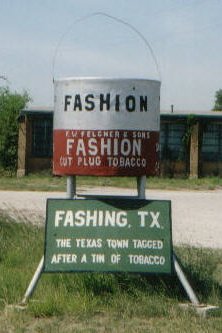 The town named after a can of Tobacco
The town named after a can of Tobacco
Click on map to see larger view.

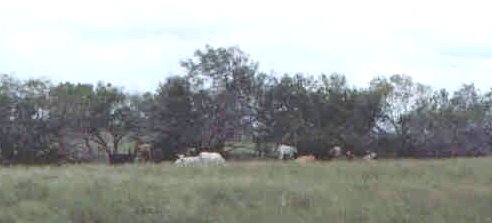
In the 1920's the Fashing community slowly but steadily developed, and new farm families continued to arrive, mostly people of German ancestry from the New Braunfels area. The first schoolhouse was built in 1917 at the site of the former Hickok School, and replaced by a second one in 1921. This school building was enlarged and remodeled a number of times, before it was replaced by the present brick school in 1952. In 1930 a separate school for Hispanic children was constructed and used until the two schools were combined in 1947. The Fashing Community School District later consolidated with the Karnes City Independent School District in 1958. After 1980 the seventh and eighth grades were bused to Karnes City. Grades one through six remained in Fashing until the school was closed in 1988. Now all children of the Fashing community go to Karnes City School for all grades.

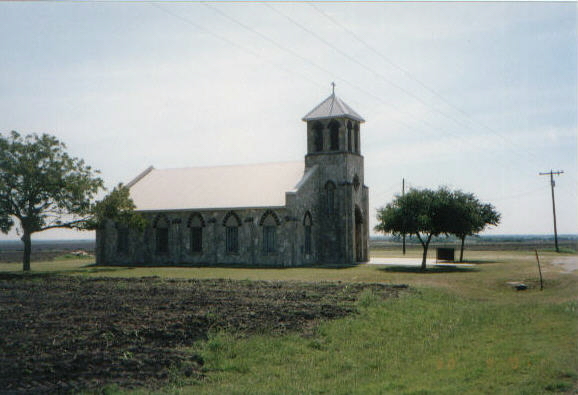

As the community developed, along came the churches. The Fashing Methodist church, organized in 1922, erected its house of worship in 1925, with lumber from the dismantled Bastrop Methodist Church. In 1934 the St. Elizabeth's Catholic Church was built from locally quarried stone on land donated by the local Henke family. This church was built with the help of volunteers in the Fashing community. The Martin Luther Lutheran Church was later erected in 1948. The church later became the Fashing-Peggy Civic center.
Transportation and communication presented quite a problem to the people of Fashing. "Before roads were paved in 1947," remembered George Weigang, an early settler, "there was only one mud hole between Fashing and Karnes City-and that was the whole way." Model T, horse, and mule provided the surest method of transportation before paved roads. Sometimes during exceptionally wet winters, the mud road between Fashing and Karnes City (17 miles) was impassable.
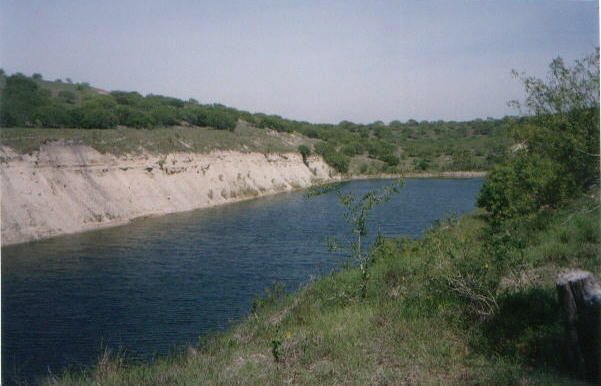

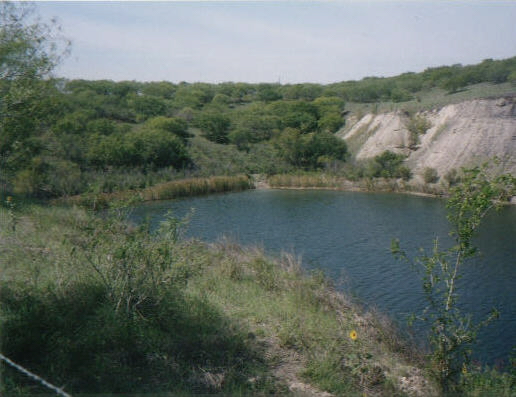
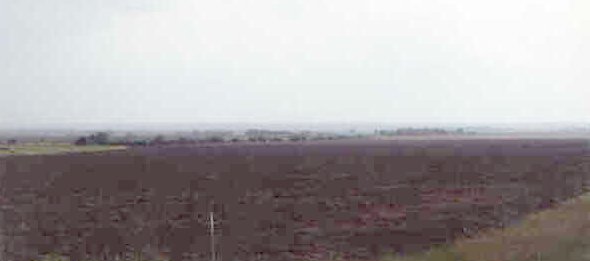
CONCLUSION:
INTERVIEWS:
ANNOTATED BIBLIOGRAPHY:
Atascosa History Committee. Atascosa County History. Pleasanton, TX: Taylor publishing Co. 1984.
This is a very good source. It gave the history in detail for the past 165 years. This source had the most credible and accurate history. I wish there would have been a later edition of this type of publication to account for the past twenty years. This source did provide examples of maps and specific Documents.
Ramos, Mary G., ed. Texas Almanac 2000-2001. Dallas: The Dallas Morning News, 1999.
I used this source to give the latest population count for my community of Fashing.
Henke, Elroy. Henke Family. [Texas]: n.p., 2001.
This was a very good source. It provided me with the entire history of the Henke family. In here it gave stories of history all over the south. Mainly, the particulars of Fashing and the Henke's contributions to this community.
The Internet was very useful in finding pictures about the local landmarks. I liked this source because it gave me good digital pictures. I would have liked to see more pictures of the previous town setup many years ago. I would have liked to have been able to receive much more information about Fashing Texas. There is very little information on the internet about this small Texas town.
Handbook of Texas Online, Atascosa County History. Barker Texas History Center, University of Texas at Austin. "n. pag." The New Handbook of Texas. On- line. Internet. July 23, 2001. 20 Sept. 2001
This is a multidisciplinary encyclopedia of Texas history, geography, and culture and was a good source due to describing exactly where the town is located by street and geographical location. It told about the people, and the population's of the past.
These sources gave me a very nice picture of South Central Texas City's in whole view. I liked this because it gave me birds eye view of where Fashing was located in conjunction to surrounding cities, and gave a many great colorful picture to use for the website. This source did not give much written information though, and I wished it would have.
Thonhoff, Robert H. Welcome to Fashing-Peggy. [Texas]: n.p., 1972.
This source gave an accurate and Brief history of the past 155 years of Fashing. The Author is a former teacher, and principal of the high school of Fashing about 25 years ago. I received this source from the Author himself through the mail. This gave a great, easy to read format along with maps and pictures to relate to the towns history.
Map locator. "Fashing TX" On-line internet. 2001. 18 Oct. 2001
This source gave a great map of where in this great state of Texas, Fashing may be found. I really like this web sight because you can get mapping directions on how to get to Fashing with incredible accuracy. You can also zoom in and out to get a great birds eye-view of south Texas.
Krueger, Alfred W. Personal interview. 16 Sept. 2001.
This was one of my best sources, he is my grandfather and is eighty-five years old and still farming. He told me more about Fashing than I could have ever written down. He new this town like the back of his hand he knew the land and who owned it before, and now. When I was younger if we ever went somewhere he knew everyone. And every time including the day of the interview we went to the see his cattle. In this short trip every day I learned more and more about the people of Fashing and the way of life here. I always love going to his house, the hospitality and peacefulness is forever so rewarding.
Henke, Mary. Personal interview. 22 Sept. 2001.
This is also one of my best sources, because she has lived in the community most of her life. Mary understands the good times and the bad times like no other. Here in Fashing she has made a lot of friends, she has not learned the history of this great community, she has "lived it." She was very helpful in the interview and I could not have asked her too many questions. She is part of the family that first settled here in Fashing and as you can see the legend lives on. She loves the community and like any American works hard to make a living.
Krueger, Sharon. Personal interview. 30 Sept. 2001.
This is a great source because she is much younger than the other interviews. I think it is great to know how the younger people of the community like it here in Fashing. As you can tell in the interview she loves the community and the benefit it may provide for her children. After talking with Sharon I gathered that family values here are very high. Although she did not know the entire history of Fashing, it was excellent to get the younger generations perspective on the lifestyle of this community.
Krueger, Matilda. Personal interview. 7 Oct 2001.
This is another great interview, and just so happens to be my grandmother. She has lived the history of Fashing since she was a young lady. Not only does she know the history of Fashing, she knows all the people and some of there history also. There are many older people of this community but please don't underestimate their abilities. Farming and ranching is not an easy job and family values are very important here. From what I have learned every holiday such as Easter, Thanksgiving, and Christmas are always celebrated here at grandma's house. Here in Fashing 60 miles south of San Antonio and then 15 miles from any major highway is the meeting place for forty two grandchildren. So there must be something special about the Fashing community.